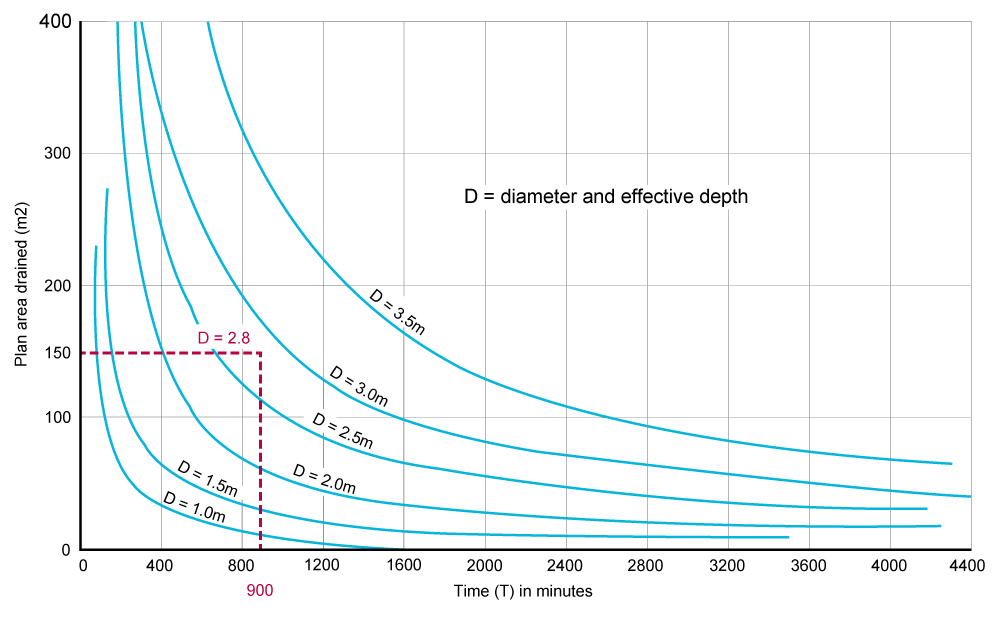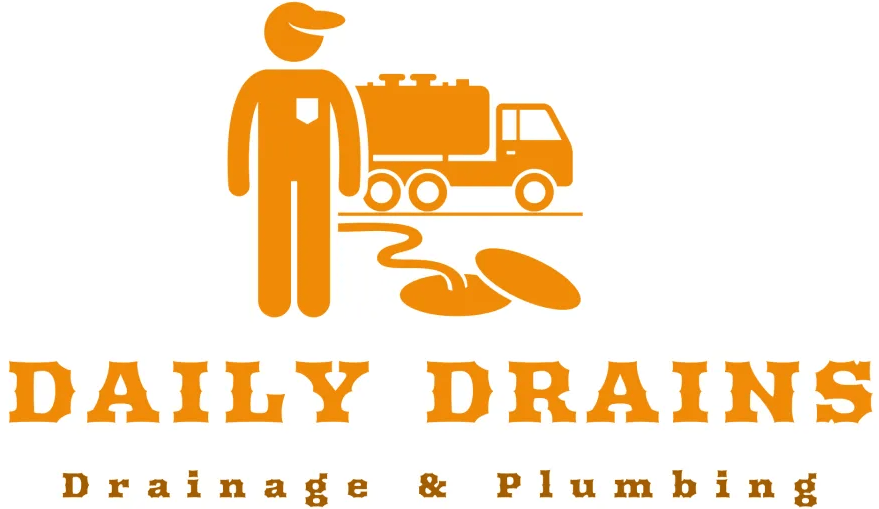Soakaway drainage shall be sited and constructed to provide adequate short term storage for surface water. In addition an adequate percolation into the surrounding ground is needed. Issues to be taken into account include:
a) soakaway location
b) soakaway design
Soakaway location
Therefore, soakaways should be:
- built on land lower than, or sloping away from, buildings
- sited at least 5m from the foundations of a building
- sited to take account of topography, ensuring that water is drained away from the building
- in soil of low permeability, only be provided where no alternative system is available.
Soakaway design
NHBC may require a percolation test for a soakaway, especially where there is:
- doubt about the ground,
- a large quantity of run-off into the soakaway which may swamp the ground.
Where the ground is free draining and granular, a test may not be necessary.
In soil, chalk and fill material subject to modification or instability, the advice of a specialist geotechnologist should be sought regarding the siting and suitability of soakaways.

Small soakaways
Small soakaways are holes filled with granular material. For instance broken brick, crushed rock or gravel, with particle size 10mm to 150mm.
Therefore, PVC sheet or concrete blinding should be laid over the fill to prevent topsoil being washed into the soakaway.
Large soakaways
Large soakaways consist of a pit lined with dry jointed or honeycomb brickwork.
However, an alternative, precast perforated concrete rings or segments are laid dry and surrounded with granular material.
In conclusion large soakaways must be calculated to ensure suitable capacity.
Percolation test procedure for surface water soakaway
The rate at which water will disperse into the ground depends on the permeability of the ground, this varies with soil type. In conclusion, the percolation test similarly provides an assessment of how the ground drains.
Above all, a the test hole can be used as part of a soakaway, it should be:
- dug in a place that could be used as a soakaway
- at least 5m from the foundations of a building
- to the same depth as the proposed drain.
Step 1
Bore a hole 150mm in diameter with an auger, to a depth of one metre.
Step 2
Fill with water to depth of 300mm. As an aid, mark a stick 300mm from one end, place in the hole and fill up to the mark. It takes approximately 5.5 litres to fill a volume of this size.
Step 3
Observe the time taken in minutes for the water to soak away.
Step 4
Where the soil becomes more permeable with depth, it’s useful to deepen and retest the bore in one-metre stages.
Design of soakaway
The relationship between the diameter or effective depth required for a soakaway, to suit a collection area. For Instance, a roof or paved surface, and the average time (T) resulting from the test is shown in the graph below.
The diameter and effective depth below invert level are assumed to be the same dimension (D).
Example
Test time (T) = 900 minutes
Plan area to drain = 150m2
From the graph below, the diameter and effective depth of the soakaway (D) are both 2.8m

When the ground is of low permeability; dig separate soakaways to drain smaller but distinct parts, examples being:
- one side of a roof to one soakaway
- the other side to a second soakaway
- the driveway or yard to a third soakaway.
Where the permeability of the ground increases with depth; Leads to the tests in the deepened trial holes giving shorter percolation times. In conclusion, it may be more cost effective to build a smaller soakaway at a greater depth below the surface.
Rainwater Harvesting Installation
Environmental issues are becoming an everyday topic. In addition, water usage is one factor in that topic that is often spoken about. Therefore, homeowners are now looking for alternatives to become more eco friendly. Steering them away from the reliance on mains water which in turn will be cost effective. Rainwater harvesting is an ideal way of optimizing from Britain’s rainy weather and reusing rainwater.
The Uses of Rainwater
By using rainwater harvesting. You can reuse the water to wash the car, flush toilets, run the washing machine, water the plants and clean the patio etc. A lot of new builds are including rainwater harvesting within their plans. This is due to all the benefits being both financially and environmentally.
The Types of Rainwater Harvesting
Daily Drains can install the three main rainwater harvesting installation systems which are detailed below:-
Underground rainwater systems – This method is handy if the above ground space is limited. However it’s a little more costly due to excavation needing to be carried out and pump installed into the tank.
Basic rainwater systems – A 400 litre stand and round water butt is an a typical rainwater harvesting system. Daily Drains can provide larger capacity systems if required.
Above-ground rainwater systems – Tank sizes vary for an above ground rain water harvesting system and are pretty low cost too when installing them.
Daily Drains covers every aspect of rainwater harvesting at good prices so if you have any questions please get in touch.

